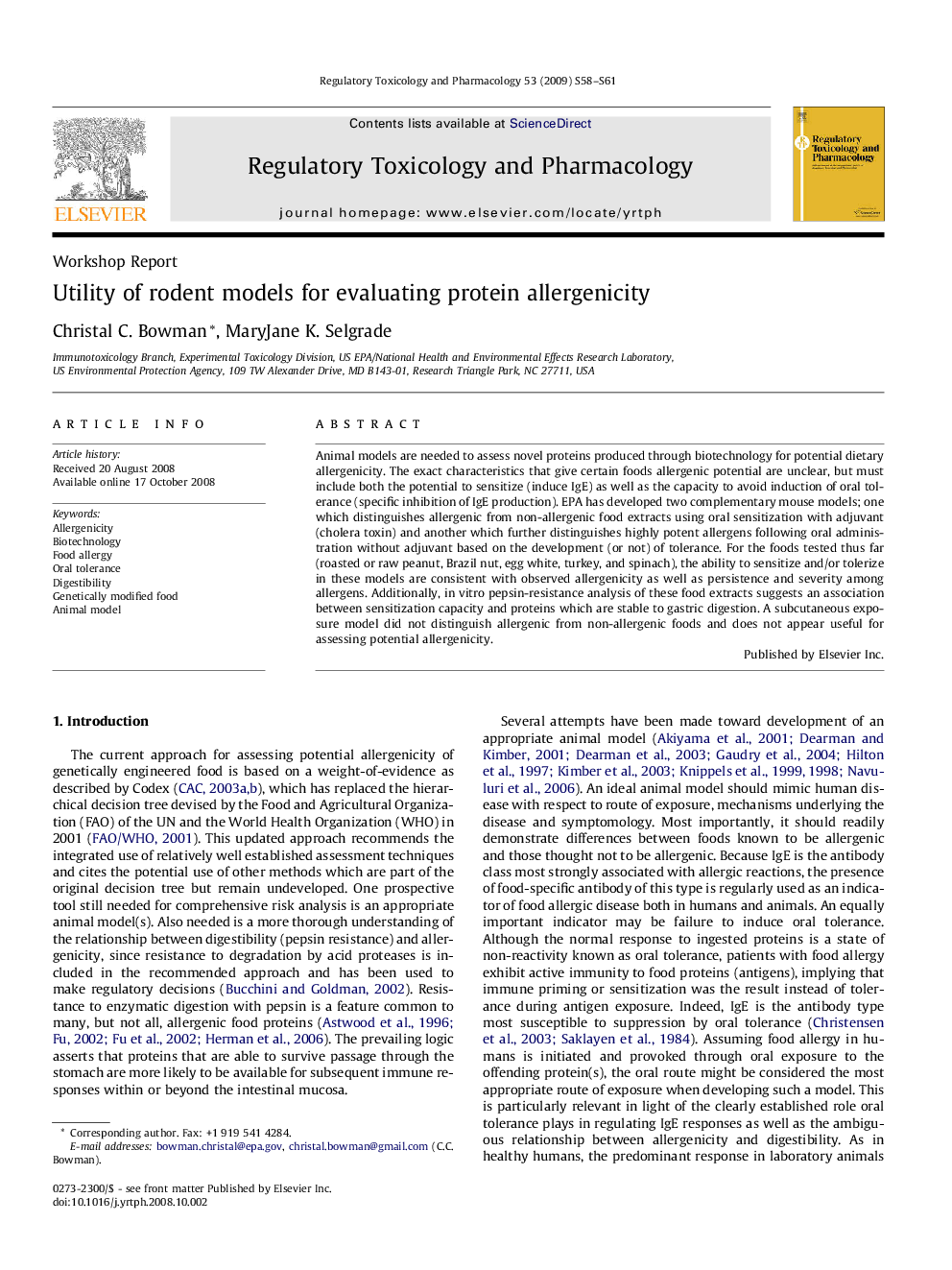| کد مقاله | کد نشریه | سال انتشار | مقاله انگلیسی | نسخه تمام متن |
|---|---|---|---|---|
| 2592739 | 1132043 | 2009 | 4 صفحه PDF | دانلود رایگان |

Animal models are needed to assess novel proteins produced through biotechnology for potential dietary allergenicity. The exact characteristics that give certain foods allergenic potential are unclear, but must include both the potential to sensitize (induce IgE) as well as the capacity to avoid induction of oral tolerance (specific inhibition of IgE production). EPA has developed two complementary mouse models; one which distinguishes allergenic from non-allergenic food extracts using oral sensitization with adjuvant (cholera toxin) and another which further distinguishes highly potent allergens following oral administration without adjuvant based on the development (or not) of tolerance. For the foods tested thus far (roasted or raw peanut, Brazil nut, egg white, turkey, and spinach), the ability to sensitize and/or tolerize in these models are consistent with observed allergenicity as well as persistence and severity among allergens. Additionally, in vitro pepsin-resistance analysis of these food extracts suggests an association between sensitization capacity and proteins which are stable to gastric digestion. A subcutaneous exposure model did not distinguish allergenic from non-allergenic foods and does not appear useful for assessing potential allergenicity.
Journal: Regulatory Toxicology and Pharmacology - Volume 54, Issue 3, Supplement, August 2009, Pages S58–S61